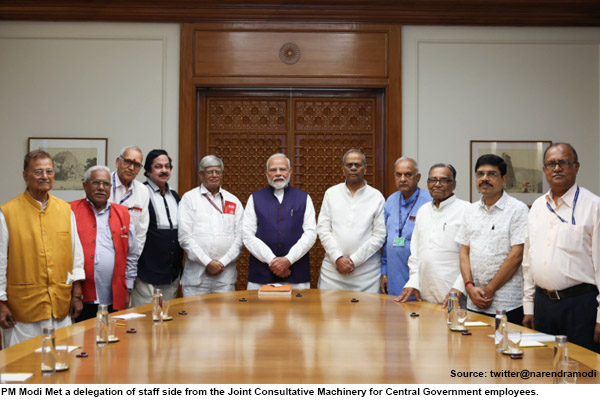Unified Pension Scheme: On Saturday, August 24, the NDA government led by Prime Minister Narendra Modi approved the Unified Pension Scheme (UPS), which is anticipated to benefit almost 23 lakh government workers. The employees covered by the National Pension Scheme (NPS) will have the option to choose to continue with it or switch to the new plan, even though it will go into effect on April 1, 2025.
Prime Minister Narendra Modi met a delegation of staff side from the Joint Consultative Machinery for Central Government employees. They expressed joy at the Cabinet’s decision regarding the Unified Pension Scheme.
Ashwini Vaishnaw, a Union Minister, claims that the program will benefit 23 lakh government workers.
“The Unified Pension Scheme ensures dignity and financial security for government employees, aligning with our commitment to their well-being and a secure future,” PM Modi said about social media platform X.
For whom is the UPS applicable?
All Central government employees who retire or plan to retire on or before March 31, 2025, with arrears, will be eligible under UPS as of April 1st of the following year.
In another post on X, PM Modi tweeted, “Met a delegation of staff side from the Joint Consultative Machinery for Central Government employees. They enjoyed the Cabinet’s decision regarding the Unified Pension Scheme.”
The Finance Ministry last year established a committee under the direction of TV Somanathan, the Finance Secretary, to examine the government employees’ current pension plan. The NPS covers all government employees who entered the service after April 1, 2004.
NPS subscribers have a choice between the two plans in the interim. It is noteworthy that UPS provides a proportionate or minimum pension of Rs. 10,000 per month to employees who have served for a minimum of 10 years, and a secured pension to individuals who have served for at least 25 years.
Additionally, the new scheme offers an Assured Family Pension in case of the death of an employee in the next financial year. The Assured Family Pension would be calculated at 60 percent of the employee’s pension immediately before her or his demise.
In addition, if an employee passes away within the upcoming fiscal year, the new plan provides an Assured Family Pension. The employee’s pension immediately before death would be used to determine the Assured Family Pension, which would be 60% of that amount.
The BJP-ruled states applauded the decision, while others called for the Old Pension Scheme (OPS) to be reinstated, according to the news agency PTI.
According to ANI, which cited an official release, there will be inflation indexation on the provided minimum pension, ensured family pension, and assured pension under UPS. As in the case of service employees, the declaration states, “Dearness Relief based on All India Consumer Price Index for Industrial Workers (AICPI-IW).”
At superannuation, there will be a lump sum payout in addition to gratuity, as per the official notice.
(With inputs from agencies)

